VERY RARE! WWII 1945 ‘CONFIDENTIAL’ CAROLINE & MARIANA ISLANDS Air Navigation Map - Lt. Moore U.S.S. Enterprise (CV-6) Air Group*

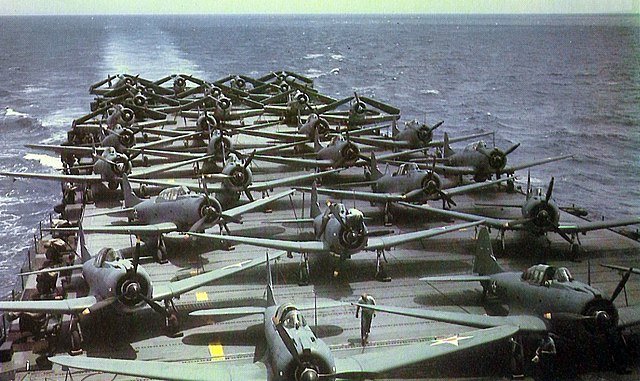






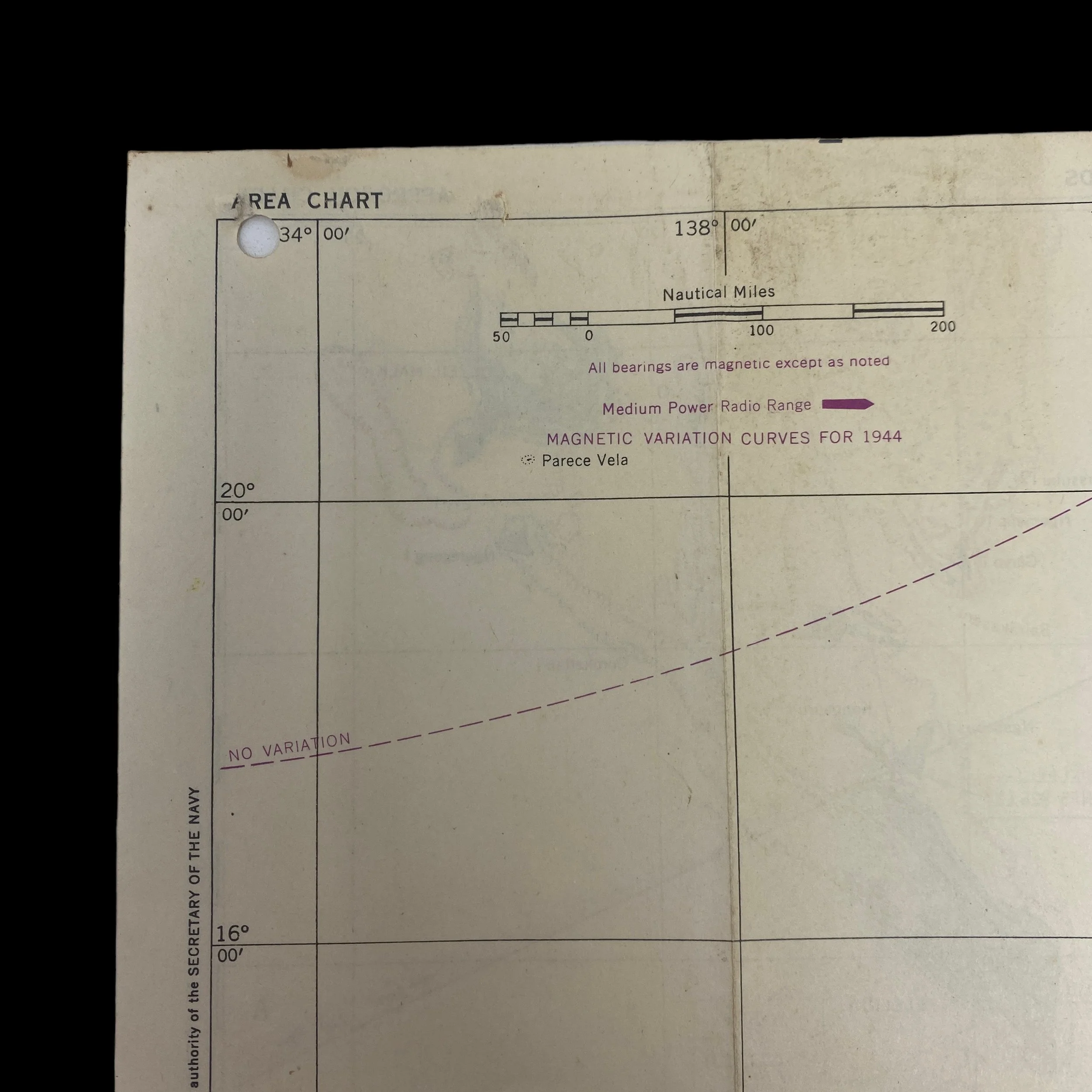



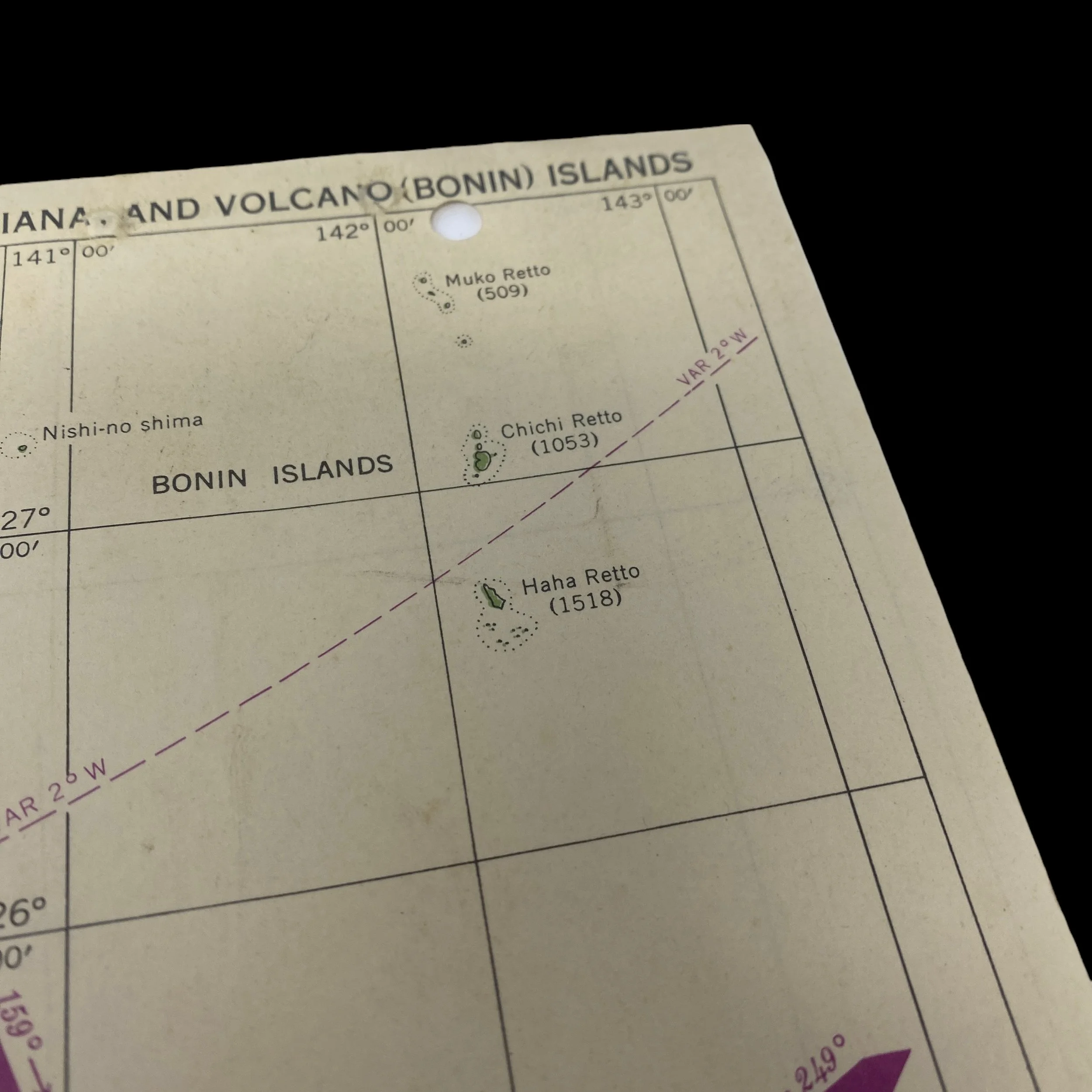







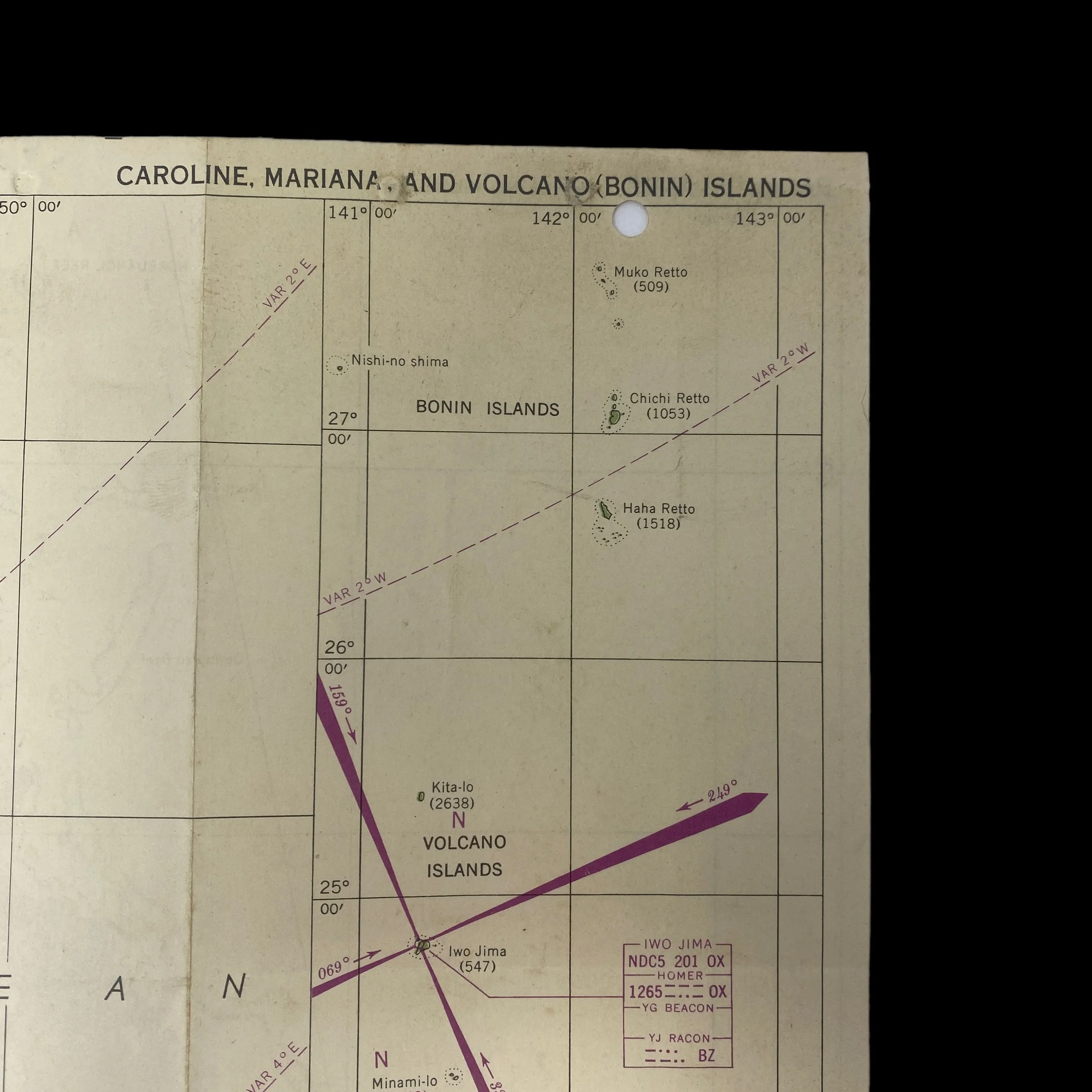

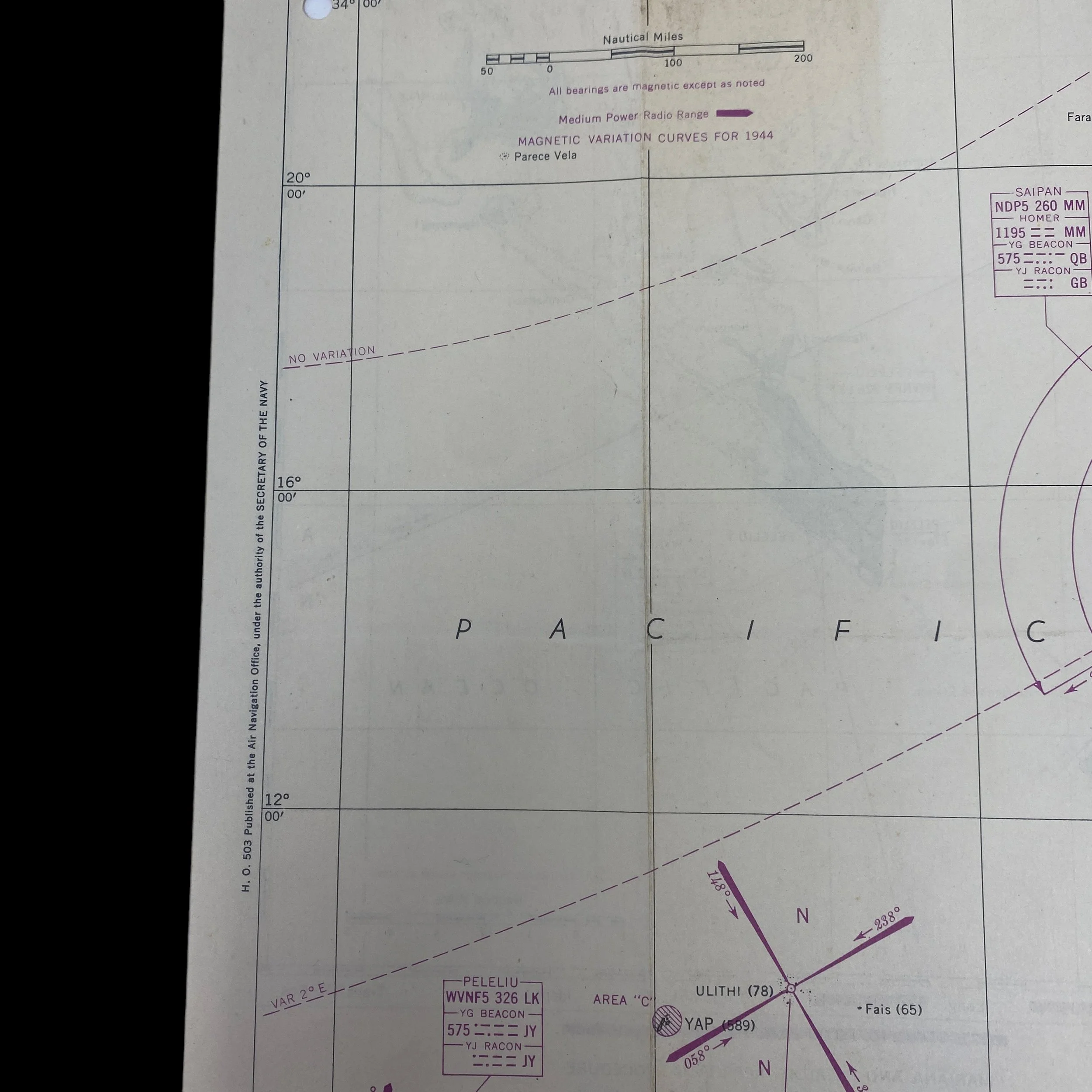






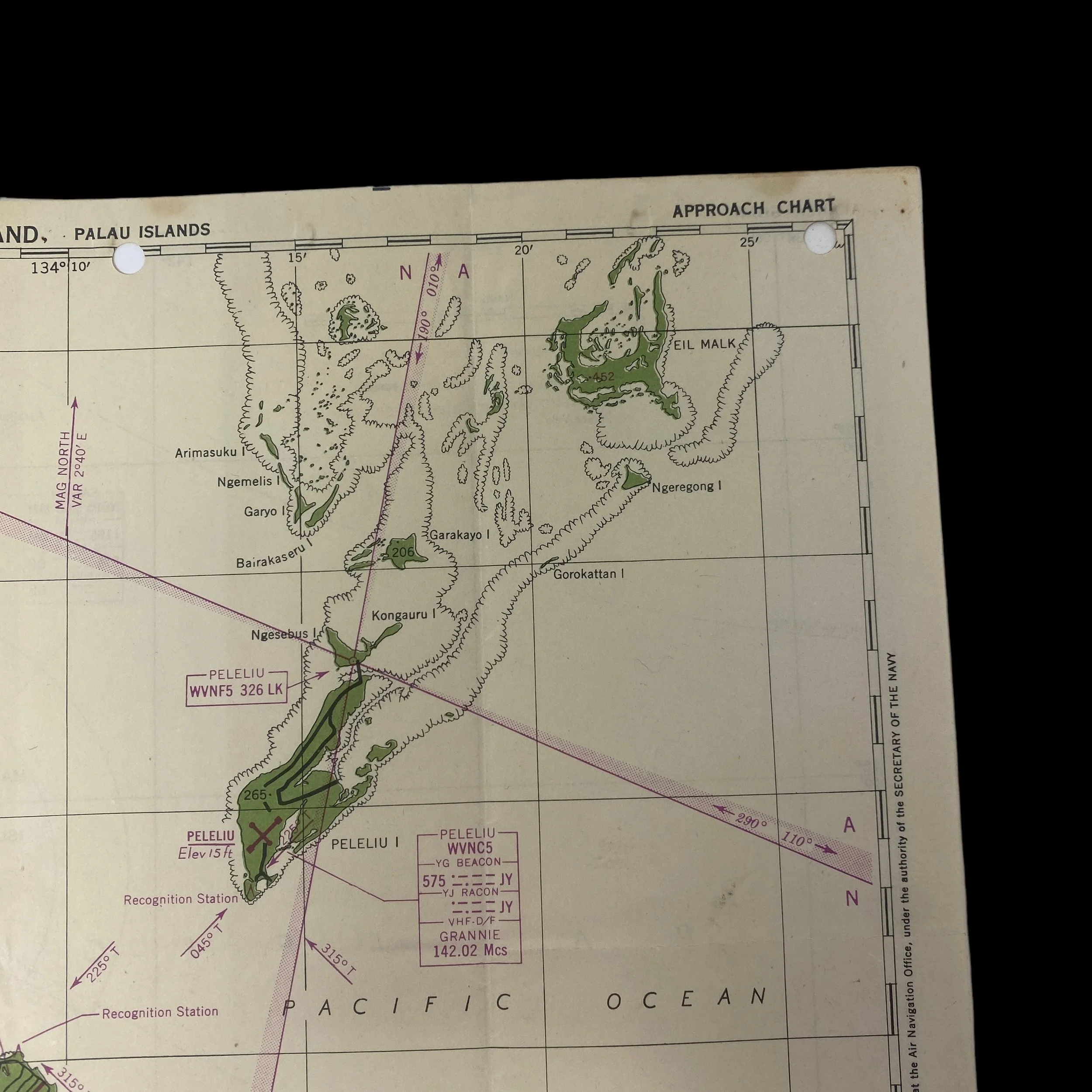








VERY RARE! WWII 1945 ‘CONFIDENTIAL’ CAROLINE & MARIANA ISLANDS Air Navigation Map - Lt. Moore U.S.S. Enterprise (CV-6) Air Group*
Comes with a C.O.A. and a full historical write-up
*Shows the Pacific Theater combat operations area of Palau Islands, Yap, Ulithi, Guam, Saipan, Tinian, Peleliu and Babelthuap.
This extremely rare ‘CONFIDENTIAL’ World War II double-sided map titled “PALAU ISLAND - CAROLINE ISLANDS & CAROLINE, MARIANA, AND VOLCANO (BONIN) ISLANDS” is dated May 1945. In the actual USS Enterprise ‘After Action’ reports it states, “It is recommended that "Top Secret" material - Operation Plans and Orders - be reclassified downward to "Secret or Confidential" prior to the start of an operation by a sufficient length of time to permit of adequate and timely distribution to subordinate officers and pilots concerned.”
This very rare target and air navigation map was carried and used by Lt. Moore who served as an American pilot on the USS Enterprise (CV-6) Air Group while operating in the area of the Marianas Islands. This rare air target map was carried by Lt. Moore as U.S. aircraft patrols and search and destroy missions were conducted by the USS Enterprise (CV-6) and its Air Group as the U.S. Navy’s fleet of 535 ships and 127,000 soldiers and Marines bore down on Guam, Saipan and Tinian: major links in Japan's inner defensive line. As the USS Enterprise Air Group supported the aerial attacks of the Marianas Islands, this map would have been essential as the pilots flew missions and patrols in tightly packed Japanese help islands of Saipan, Tinian, Rota, Guam and later the Battle of the Philippine Sea.
Enterprise and Task Force 58 spent nearly a month in the Mariana Islands, preparing for and supporting the Saipan landings on 15 June 1944, striking targets on Guam and Rota, and engaging in the fifth major carrier battle of the war: the Battle of the Philippine Sea, 19-20 June 1944. Enterprise played a significant role in the battle: her Combat Information Center (CIC) directed much of the action during the "Turkey Shoot" on the 19th, while an Air Group Ten search was the first to locate the Japanese fleet on the afternoon of the 20th. Also notable in this report are the growing number of night air missions, led by the Big E's VF(N)-101 and VT-10 squadrons.
Collection of Lt. Moore:
This artifacts comes directly from the exclusive collection of CONFIDENTIAL and SECRET World War II coordinate target maps, aerial reconnaissance photographs, USS Enterprise D-Day Pacific Theater attack order sheets, and more were used extensively by Lt. Moore who served as an American pilot on the USS Enterprise (CV-6) Air Group. Lt. Moore is a WWII American hero who served as a U.S. carrier combat pilot aboard the USS Enterprise and saw action in some of WWII’s most infamous battles. Lt. Moore kept his a record of his service through his bring back collection of ‘CONFIDENTIAL’ Pacific Theater target maps, aerial reconnaissance photos etc. starting with his aerial combat missions with the USS Enterprise during the Guadalcanal Campaign. It was here he covered the landings and participated in the battles of Eastern Solomons and Santa Cruz Islands. Despite the USS Enterprise being damaged in both battles, USS Enterprise launched Lt. Moore and its other skilled pilots to assist the ships involved in the Naval Battle of Guadalcanal. In late 1943 and early 1944, Enterprise took part in the Gilberts and Marshall invasions and air attacks on the Japanese in the Central and Southern Pacific. In the summer of 1944, USS Enterprise participated in the Marianas operation and the Battle of the Philippine Sea, followed with the largest naval battle in history, the Battle of Leyte Gulf in October. In February 1945, Lt. Moore took part in the aerial attack of the Iwo Jima invasion, then raids on the Japanese home islands and the Okinawa campaign in April. Due to damage received by two kamikaze attacks in April and May, USS Enterprise returned to the United States with the distinction of being the most decorated U.S. Navy warship during the war. Following Japan's surrender, she helped transport U.S. servicemen back to the United States. Lt. Moore survived the length of the war flying countless aerial combat missions and raids against the Japanese aboard what is considered one of the most infamous U.S.N. ships to this day.
USS Enterprise (CV-6) Return to duty:
Captain Matthias Gardner relieved Ginder on 7 November. Back at Pearl Harbor on 6 November, Enterprise left four days later to provide close air support to the 27th Infantry Division landing on Makin Atoll, during the Battle of Makin, from 19–21 November 1943. On the night of 26 November, Enterprise introduced carrier-based night fighters to the Pacific when a three-plane team from the ship broke up a large group of land-based bombers attacking TG 50.2. Two of the three planes returned to the ship, with LCDR Edward "Butch" O'Hare the only casualty. After a heavy strike by aircraft of TF 50 against Kwajalein on 4 December, Enterprise returned to Pearl Harbor five days later.
The carrier's next operation was with the Fast Carrier Task Force in softening up the Marshall Islands and supporting the landings on Kwajalein, from 29 January-3 February 1944. Then, Enterprise sailed, still with TF 58, to strike the Japanese naval base at Truk Lagoon in the Caroline Islands, on 17 February. Again Enterprise made aviation history, when she launched the first night radar bombing attack from a U.S. carrier. The twelve torpedo bombers in this strike achieved excellent results, accounting for nearly one-third of the 200,000 tons of shipping destroyed by aircraft.
Detached from TF 58 with escorts, Enterprise launched raids on Jaluit Atoll on 20 February, then steamed to Majuro and Espiritu Santo. Sailing on 15 March in TG 36.1, she provided air cover and close support for the landings on Emirau Island (19–25 March). The carrier rejoined TF 58 on 26 March, and for the next 12 days, joined in a series of strikes against the islands of Yap, Ulithi, Woleai, and Palau. After a week's rest and replenishment at Majuro, Enterprise sailed on 14 April to support landings in the Hollandia (currently known as Jayapura) area of New Guinea, and then hit Truk again from 29–30 April.
On 6 June 1944, she and her companions of TG 58.3 sortied from Majuro to join the rest of TF 58 in attacking the Marianas Islands. Striking Saipan, Rota, and Guam from 11–14 June, Enterprise pilots gave direct support to the landings on Saipan on 15 June, and covered the troops ashore for the next two days.
Aware of a major Japanese attempt to break up the invasion of Saipan, Admiral Spruance, now Commander 5th Fleet, positioned TF 58 to meet the threat.